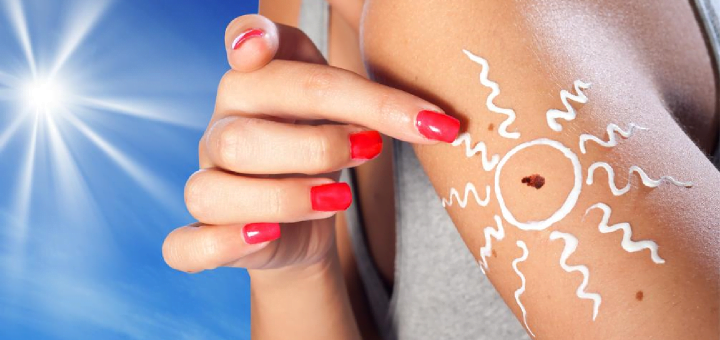
Three-day weekends, the ultimate time to enjoy the summer weather while the sun’s out, the breeze is blowing, and there’s no worry of hurrying back to work on Monday. But while you’re out at your Memorial Day BBQs this weekend, don’t forget your sunscreen!
Even though those UV rays from the sun – or tanning beds – give you that nice bronzed, tan look you’ve been missing all winter, they can also cause sun damage to your skin leading to skin cancer or melanoma (a rarer, more dangerous type of skin cancer).
Skin cancer is the most common type of cancer in both in the US, UK, Australia, and New Zealand. Melanoma, the deadliest form of skin cancer, accounts for roughly 2% of all skin cancer cases but the 5 year survival rate is quite high at 91%. Let’s talk about melanoma prevention.
One factor leading to a high survival rate is early detection. Know your skin and regularly check yourself for irregular spots. Freckles, birthmarks, and even moles are quite common and usually not irregular, but keep an eye on them to make sure they don’t change over time.
A good rule of thumb to follow when trying to decide if that new freckle or spot looks irregular is the ABCDE rule:
A: Asymmetry – Does the left half look like the right half?
B: Border Irregularity – Are the edges blurred, notched, or ragged?
C: Color – Is it the same color throughout or are there different shades of colors?
D: Diameter – Is the spot bigger than 6 mm, or ¼”, wide? That’s roughly the size of a pencil eraser
E: Evolving – Does the spot change in size, shape, color, or sensation (itching, tenderness, etc.) over time?
If you see a worrisome spot, talk to your dermatologist.
While 10% of all melanoma cases are linked to a family history of the disease, it’s also linked to other factors too. The biggest factor is skin color.
The pigment Melanin, which gives your skin and hair color, also protect your skin from UV rays. This is why Caucasians are 24 times more likely than African-Americans develop skin cancer. Dermatologists may recommend those at particularly high risk to undergo yearly mole-mapping to more accurately keep track of how those are behaving over time.
Not all spots are bad though, and there’s one really easy way to keep those worrisome spots away: sunscreen. The American Academy of Dermatology recommends using 1 oz of greater than 30 SPF sunscreen (enough to fill a shot glass) to cover all exposed skin 15 minutes before going outside. Sunscreen should be applied every 2 hours, or after swimming or sweating.
If you find yourself without sunscreen, try to use hats or clothing to protect your skin. The suns’s rays are strongest between 10 am and 2 pm so if your shadow is shorter than you are, go find some shade!
—
Like what you see? Sign up to join Human Health Project, a community-based, not-for-profit website focused on using peer to peer health support for a healthier you.
—





Sun rays are strong and can lead to burns past 2pm – latest recommendations are 10am – 4pm. http://www.sunsafetyalliance.org/uv_rays.html